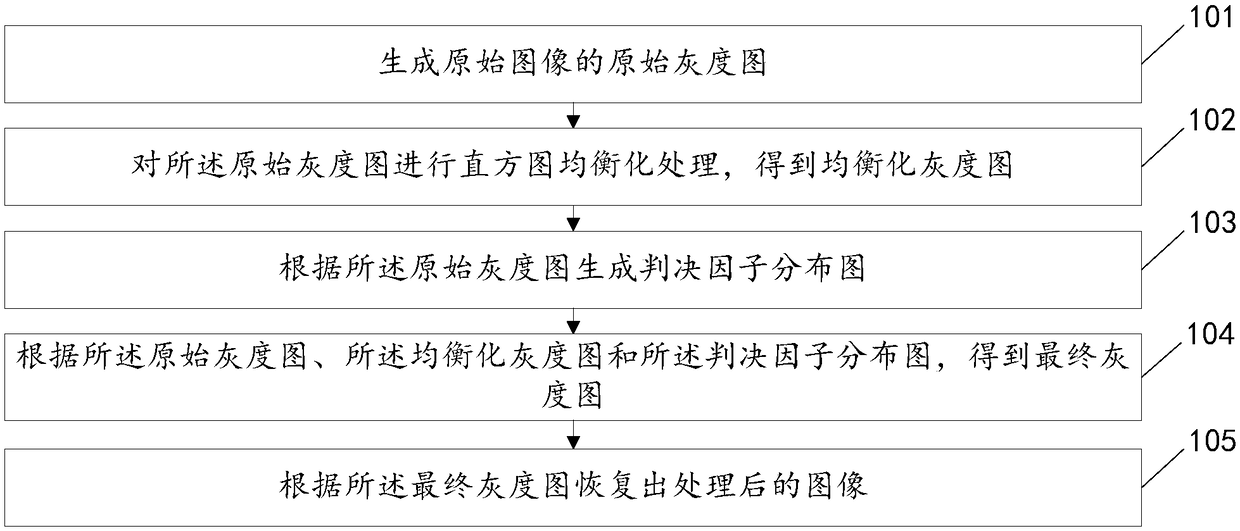An image processing method and apparatus
An image processing device and an image processing technology, which are applied in the field of image processing, can solve the problems of image quality deterioration in pseudo-flat parts and reduce image quality, and achieve the effect of avoiding image quality deterioration and ensuring image quality.
- Summary
- Abstract
- Description
- Claims
- Application Information
AI Technical Summary
Problems solved by technology
Method used
Image
Examples
Embodiment Construction
[0051] In order to make the object, technical solution and advantages of the present invention clearer, the implementation manner of the present invention will be further described in detail below in conjunction with the accompanying drawings.
[0052] figure 1 is a flow chart of an image processing method provided by an embodiment of the present invention, see figure 1 , the image processing method includes:
[0053] Step 101: Generate an original grayscale image of the original image.
[0054] In the embodiment of the present invention, generating the original grayscale image of the original image may include: acquiring the original image; and processing the original image to obtain the original grayscale image.
[0055] Wherein, processing the original image includes but is not limited to converting the original image into a format such as YUV to generate an original grayscale image. Specifically, Y in YUV represents brightness, and U and V represent chroma, so if there ...
PUM
 Login to View More
Login to View More Abstract
Description
Claims
Application Information
 Login to View More
Login to View More - Generate Ideas
- Intellectual Property
- Life Sciences
- Materials
- Tech Scout
- Unparalleled Data Quality
- Higher Quality Content
- 60% Fewer Hallucinations
Browse by: Latest US Patents, China's latest patents, Technical Efficacy Thesaurus, Application Domain, Technology Topic, Popular Technical Reports.
© 2025 PatSnap. All rights reserved.Legal|Privacy policy|Modern Slavery Act Transparency Statement|Sitemap|About US| Contact US: help@patsnap.com



